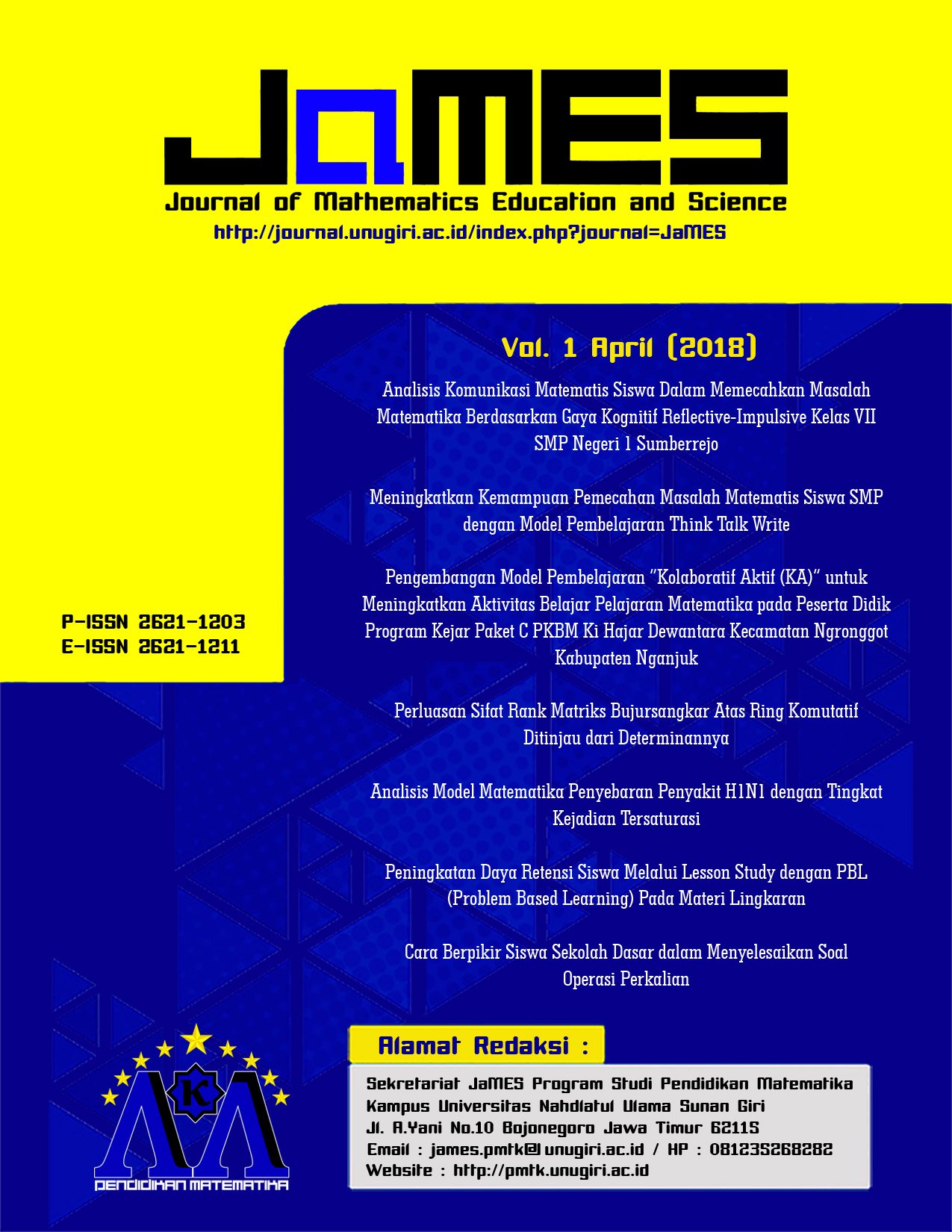ANALISIS MODEL MATEMATIKA PENYEBARAN PENYAKIT H1N1 DENGAN TINGKAT KEJADIAN TERSATURASI
 PDF Download: 502
PDF Download: 502
DOI:
https://doi.org/10.32665/james.v1iApril.14Keywords:
Dynamic Analysis, Analisis Dinamik, Swine Flu, Flu Babi, Saturated event Level, Tingkat Kejadian Tersaturasi, Equilibrium Point, Titik Kesetimbangan, Stability, KestabilanAbstract
Swine flu is an acute respiratory infection that attacks the body's organs especially the lungs. The disease is caused by Influenza Virus Type A, type H1N1. In this article constructed mathematical model of the spread of H1N1 disease. Mathematical model that created the model Susceptible, Exposed, Infective, and Treatment. The existence of behavior change and influence of infected individual density become the reason of model formation with saturation occurrence rate. From the dynamic analysis, the model has two equilibrium points, that is, a stable equilibrium free equilibrium point when the basic reproduction number is less or equal to one, and an endemic equilibrium point that exists and is stable when the basic reproduction number is greater than one. Finally, the results of the analysis prove the control of the spread of disease into a disease-free state.
Flu babi adalah infeksi saluran pernapasan akut yang menyerang organ tubuh terutama paru-paru. Penyakit ini disebabkan oleh Virus Influenza tipe A, jenis H1N1. Pada artikel ini dikonstruksi model matematika penyebaran penyakit H1N1. Model matematika yang dibuat yaitu model Susceptible, Exposed, Infective, dan Treatment. Adanya perubahan perilaku dan pengaruh kepadatan individu terinfeksi menjadi alasan pembentukan model dengan tingkat kejadian tersaturasi. Dari hasil analisis dinamik, model memiliki dua titik kesetimbangan, yaitu titik kesetimbangan bebas penyakit yang bersifat stabil saat bilangan reproduksi dasar bernilai lebih kecil atau sama dengan satu, dan titik kesetimbangan endemi yang eksis dan bersifat stabil saat bilangan reproduksi dasar bernilai lebih besar dari satu. Pada akhirnya, hasil analisis membuktikan adanya kontrol penyebaran penyakit menjadi keadaan bebas penyakit.
References
[2] Capasso, V. & Serio, G., A Generalization of the Kermack-McKendrick Deterministic Epidemic Model. Mathematical Biosciences, Volume 42, (1978). pp. 43-61.
[3] El hia, M., Balatif, O., Bouyaghroumni, J., Labriji, E., & Rachik, M., Optimal Control Applied to the Spread of Influenza A (H1N1). Applied Mathematical Sciences, 6, (2012). 4057-4065.
Downloads
Published
How to Cite
Issue
Section
License
Authors who publish with this journal agree to the following terms:
- Authors retain copyright and grant the journal right of first publication with the work simultaneously licensed under a Creative Commons Attribution License that allows others to share the work with an acknowledgment of the work's authorship and initial publication in this journal.
- Authors are able to enter into separate, additional contractual arrangements for the non-exclusive distribution of the journal's published version of the work (e.g., post it to an institutional repository or publish it in a book), with an acknowledgment of its initial publication in this journal.
- Authors are permitted and encouraged to post their work online (e.g., in institutional repositories or on their website) before and during the submission process, as it can lead to productive exchanges, as well as earlier and greater citation of published work
 PDF Download: 502
PDF Download: 502
















